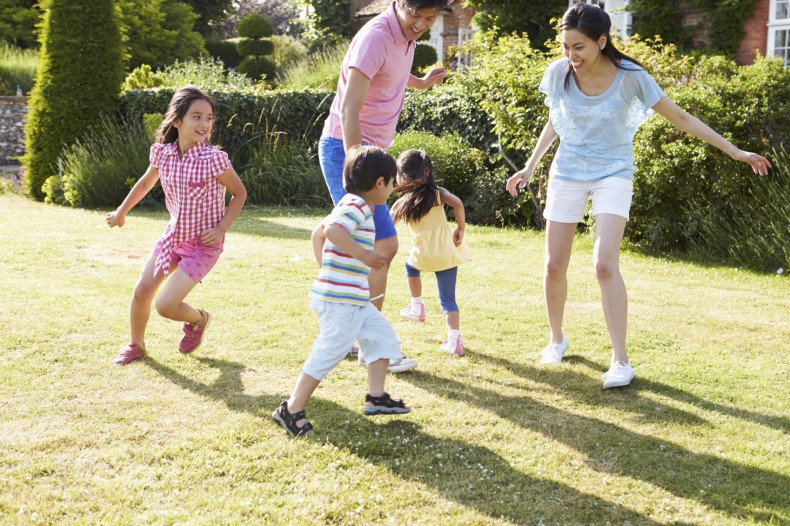
Why are Singaporeans not having more children? A marriage and parenthood survey conducted in 2012 by the National Population and Talent Division in the Prime Minister’s Office found that most Singaporeans — 80% among singles and 84% among married people, respectively — aspire to have two or more children. Yet, Singapore’s total fertility rate (TFR) in 2014 was 1.25, or an average of one-and-a-quarter births to each woman in her childbearing years. This falls short of the government’s stated mid-term goal of 1.4–1.5 and is way below the long-term goal of 2.1.
Over the past few years, the Singapore government has stepped up efforts to close the gap between Singaporeans’ attitudes to parenthood and actual behaviour. Various benefits were rolled out for parents through the enhanced Marriage and Parenthood Package in 2013 and the 2015 state budget. These include an increased supply of public housing and childcare facilities, as the government makes supporting parenthood aspirations a national priority.
Is Singapore heading in the direction of the Nordic welfare state model? Not quite, it would seem. The Nordic countries, comprising a loose grouping of North European states: Denmark, Finland, Iceland, Norway and Sweden, share a broad commitment to safeguard individualism by providing protection for vulnerable individuals and groups in society. The Nordic model emphasises inclusiveness, regardless of starting point and eventual outcome.
Singapore’s wide-ranging benefits to encourage marriage and parenthood are laudable, but they can be more inclusive, in terms of benefit recipients. Currently, the level of benefits is tied to the parents’ marital and employment status. Childcare subsidies are determined according to household income. Allocation of schooling is based on neighbourhood and parents’ affiliations, resulting in intense competition for highly sought-after places in so-called “elite” schools.This is reflected in the varying levels of state funding for independent, autonomous and government-aided schools.
Nordic family policies are built on a partnership between individual and state. The individual maintains the social status of a family through a dual-earner and dual-carer arrangement. In this way, neither the family income nor the individual’s aspirations are compromised. The range of state benefits includes: six to nine months of childcare leave and universal child allowance for parents with children 16 years and younger. Single parents, student parents, homecare parents (employed and unemployed) and families with a child or parent suffering from illness or disability all have customised supplements and support.
Entrenched in the Nordic model is a comprehensive network of support targeted at creating a sense of security and trust within the system. This multi-faceted support seeks to allay an individual’s anxiety regarding the future, and by extension, the “risk” associated with having children.
Singapore can take a leaf from the Nordic welfare model. Extending the same level of support to all facets of society sends a message of equal protection for all. A culture of inclusiveness can reinforce people’s trust in the willingness of the institutions and fellow citizens to take care of every citizen, without pre-qualification or judgement. This can add to the sense of security, further encouraging childbearing.
There is a two-fold advantage for extending equal benefits regardless of parent’s background. First, the child is not made to bear the consequences of the parent’s background or achievements. Equal access to opportunities will help create a level playing field and remove the stigma of state assistance. Second, universal coverage will encourage inclusiveness and acceptance of differences in aspirations. The sense of security that comes with the assurance that every citizen has a place in society can tip the balance for would-be parents to have children. This will go a long way to help balance personal aspirations with family responsibilities.
Adoption is another option. In 2012, a total of 7,813 abortions were recorded, against 42,663 live births to citizens and/or permanent residents. Couples who have difficulties conceiving could be linked up with mothers who plan to abort their babies, to explore the possibility of adoption. The decision to adopt or abort a child is a complex one. However, the assurance of support from the community might convince parents otherwise.
Let’s not forget families with special needs. Special education schools in Singapore for students with disabilities are currently run by voluntary welfare organisations with funding from the Ministry of Education (MOE) and National Council of Social Services. There are long waiting queues for limited places in these programmes. In contrast, the Gifted Education Programme for children at the other end of the spectrum, for example — those who are identified as “high ability learners” — are located at schools that are centrally administered by MOE, at least at the primary school level. Subsuming the education of special needs children under the broader MOE ambit would provide the reassurance that everyone in society is treated equally, regardless of their outcomes.
Such measures could foster a secure environment to encourage Singaporeans to have more children. It is an environment that can be created by a society where everyone is treated the same way regardless of their current situation. However, no amount of government intervention can be expected to eradicate completely the sacrifices involved in raising children. Hence, the motivation to have children requires that parents recognise the intrinsic rewards of having children.
Magdalene Choo is a Research Associate at IPS Social Lab. This piece draws from a panel discussion on growth, values and welfare in the Nordic states held on 9 April 2015 at the Lee Kuan Yew School of Public Policy.
Photo ©iStockphoto/Monkeybusinessimages
